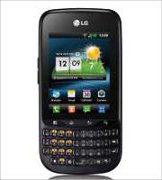If you want to buy a mobile phone with a good camera, making judgments based on Resolution (expressed in megapixels) alone won’t get you the desired result. You need to look at other features of the camera as well.
Here are some of the key points you should consider before buying a camera phone:
Resolution
Megapixel count is the first thing to look for in a camera phone. It is indeed an important aspect of a digital camera.
But what do megapixels signify, and how many are good enough?
 |
Megapixel means ‘million picture elements per inch’. Usually, the more elements there are per inch of the image, the clearer the picture will be. The only drawback is that each picture will consume more space on the memory card, and will consequently take time to transfer wirelessly. But then there are compression technologies and faster networks (3G and Bluetooth 3.0) to help with speedy data transfers.
Autofocus
Autofocus is the best way for a phone camera to focus on the subject, and it therefore results in high quality images. In case your camera doesn’t have the Autofocus feature, you will often get blurred images.
 |
At times a picture seems to be perfectly focused when it is viewed on a small mobile screen, but when you want to see it on a bigger screen such as on your PC, or want to get it printed, you will realise that it is actually blurred.
Most of us take autofocus for granted, though even these days there are a lot of camera phones with fixed focus cameras. Simply avoid these.
Frames per second (FPS)
Most cameras do capture video as well, and a high mega Pixel camera can produce very average video because it captures at a slow frame rate.
A video is a collection of images taken in succession. The more images a camera takes per second, the smoother a video it produces.
24 FPS is a healthy number and 30 FPS in a mobile camera is really good.
Also, check if the camera records HD video (720 p or better); many phones offer this feature nowadays.
Flash
For taking an indoor picture with a mobile phone, flash is very important.
There are three options where flash is concerned. The best, and an expensive type, is Xenon Flash. It is 1,000 times brighter than the LED variety, but consumes a lot of power, thus draining the battery very fast.
 |
The second option is a dual LED flash. It consumes less power and is also less bright, but the good part is that it consumes less power and can be used as a torch during a video shoot because it can be kept on for much longer.
There are single LED flashes too, but they are useless because they produce very little light.
Lens and sensor
Lenses are among the key components of the camera. Better the lens better the picture. Go for a camera phone that has a branded lens such as one from Carl Zeiss, which makes really good lenses.
Mobile companies don’t usually specify the size of the sensor their phone camera uses, though this detail is almost as important as mega pixel value. However, a sensor should be proportionate to the camera’s size.
So next time you see a big lens behind a camera phone don’t think it’s a bad thing, and that it will be more prone to breaking. In fact, it is a sign of a good camera.
White balance, exposure, face detection, scene modes
White balance helps control the exposure based on lighting conditions. Without white balance and exposure control features, you will get washed out images in which a blue sky might appear white in bright sunlight.
Scene modes give you preset exposure settings for different lighting conditions such as night, bright light or sunny, cloudy, incandescent (indoors with tungsten filament bulbs), and fluorescent (indoors with fluorescent lighting). These modes make it easy to take pictures without having to manually adjust settings.
Face detection is a nearly three year old technology. It helps the camera identify faces and focus on them rather than on the centre of the image.
Additional features
Look for features that allow you to directly upload images and video to sites such as Facebook, YouTube or Picasa.
Image stabilisation is another useful feature, especially for people who have unsteady hands. However, it is not available in most phones and even those that do have it use software to do so; instead of lens control. This is not the best way of stabilising images.
Another useful feature is optical zoom; but it is only available in one Spice phone. Optical Zoom adjusts the camera lens for zooming, and there is no distortion; whereas with digital zoom, the image is simply stretched to enlarge a portion of it, which distorts the picture. Therefore, Digital Zoom shouldn’t influence a buying decision as it can be achieved in any case using image editing software.
A good user interface, dedicated camera button, and camera cover that protects the lens are some other features that can make a good camera phone better.
You can look for some good camera phones here, and we will keep writing such stories.


